|
You may be wondering, what on earth do ammonia and engineers have to do with food history? Well, ammonia was one of the primary ingredients in creating artificial ice in the late 19th and early 20th centuries. The poster above shows Uncle Sam brandishing a wrench, hand on the shoulder of an older engineer, who reclines in a chair reading the newspaper. One sheet of the newspaper has fallen to the floor, and we can make out "War" in the headline. In the background we can see the outlines of pipes and valves. The poster reads "ENGINEER - If you are a patriot, If this is your fight, Get Into It - Stop the Ammonia Leaks." The top of the poster indicates it was sponsored by both the United States Food Administration and the National Association of Ice Industries. Refrigeration was changing rapidly in the 1900s. Most of the country still refrigerated with "natural ice," or ice harvested in winter from freshwater sources like lakes and rivers. But "artificial ice," that is water frozen mechanically, was gaining ground. Artificial ice making factories had been around since the 1870s, but they were costly and inefficient, used primarily in warmer climes where shipping natural ice was too inefficient. The primary refrigerant in these factories was ammonia, which has explosive properties. In fact, ammonia is a primary component in making gunpowder and explosives, and obviously demand for its use went up exponentially when the U.S. joined the First World War in April of 1917. Ammonia cools through compression. Jonathan Reese in Before the Refrigerator: How We Used to Get Ice (Amazon affiliate link) explains the process: The compression refrigeration cycle depends on the compressor forcing a refrigerant around a system of coils. A refrigerant is any substance that can be used to draw heat away from an adjoining space, but some refrigerants worked much better than others. During the late nineteenth century, most American refrigerating machines used ammonia as their refrigerant. The main advantage of ammonia was that it was very efficient. In other words, it has a very low vaporizing temperature (or boiling point) at which it will turn from a liquid into a gas. This means that it required less energy to propel it through the cycle and remove heat from whatever space or substance that the operator needed to become cold. If ammonia leaked through the pipes of these early machines (which it was prone to do), under certain circumstances it could even explode, as the New York packing house example described above illustrates.¹⁰ Most American refrigerating equipment manufacturers didn’t realize that until ammonia compression refrigeration systems had become extremely popular.¹¹ Cold storage also increased in use during the First World War, and refrigerated railroad cars, which helped drive agricultural specialization in fruits and vegetables around the country (Georgia peaches, Florida oranges, Michigan cherries, New York apples, and California's salad bowl), depended on ice for refrigeration and cooling. Ice was the invisible ingredient in the nation's food system. The National Association of Ice Industries was founded in August, 1917 in Chicago, IL as ice harvesters, producers, and distributors gathered at a conference. Realizing the importance of the ice trade in food preservation and conservation, the association vowed to cooperate with the government as part of the war effort. The conference proceedings were reported in Refrigerating World, the industry's trade journal, in the September, 1917 issue. In addition to forming the National Association of Ice Industries on the second day of the conference, the attendees also discussed convincing farmers of the benefits of cold storage and encouraging them to construct ice houses on their farms, of convincing the public that using ice and refrigeration would reduce food waste and save money, and finally of reducing inefficiencies in delivery, including advocating for one delivery service making one delivery per day to prevent competing delivery companies from wasting manpower, horsepower, and ice. Wartime not only necessitated the conservation of ammonia, but also gave the natural ice industry a boost. Already in decline due to concerns about polluted waterways, the natural ice industry was encouraged to revive as another way to conserve ammonia and the fuel that powered the steam engines and electric motors that powered the refrigerating process. The revival would ultimately be short-lived. The end of the First World War all but ended the natural ice industry. As refrigerants became abundant again and energy prices came back down, the demand for artificial ice went up. The advent of electric home refrigerators in the 1920s ultimately signaled the end of the household ice box, and the deliveries that went with it. Read More: The Amazon affiliate links below help support The Food Historian
1 Comment
It's Juneteenth! Thanks to everyone who joined us for Food History Happy Hour. This week we make the Rose in June cocktail from the 1917 "Recipes for Mixed Drinks." We discussed Juneteenth, red velvet cake, victory gardens including propaganda and the exclusion of Black farmers and imprisoned Japanese Americans, the role of visuals in influencing taste, Black Food Historians You Should Know, disparities in book contracts, hot weather foods, salads, summer kitchens, how historical peoples coped without air conditioning, how historical peoples kept foods cold before refrigeration, ice and ice cream in the ancient world, rural electrification and electric refrigerators, the Frigidaire Cookbook, icebox pie, racial stereotypes in food advertising, including the history of the "Aunt" and "Uncle" terms, including Uncle Ben and Aunt Jemima, the history of the mammy trope, the tragedy of child caring roles, What Mrs. Fisher Knows About Old Southern Cooking, Black children in advertising, Franchise: the Golden Arches in Black America, the forthcoming book scanner I ordered, monuments and statues, and we ended with a signal boost for the James Hemings Society.
Rose in June Fizz (1917)
The "Rose in June" cocktail comes from the "Fizz" section of Recipes for Mixed Drinks by Hugo Ensslin (1917).
The original recipe calls for: Juice of 1 orange Juice of 2 limes 1 jigger raspberry syrup 1 jigger gin Shake well in a mixing glass (or cocktail shaker) with cracked ice, strain into Collins glass and fizz with sparkling water OR - if you don't have fresh citrus fruits OR raspberry syrup - you can substitute 1/3 cup orange juice, 1/4 cup lime juice, a heaping tablespoon of raspberry (or in my case, strawberry) jam, and the gin. Very nice, very refreshing, but sadly NOT pink.
Here's a roundup of links related to everything we talked about (in addition to all the links above!):
If you liked this post and would like to support more Food History Happy Hour livestreams, please consider becoming a member or joining us on Patreon. Members and patrons get special perks like access to members-only content.
Thanks to everyone who joined me on Friday for Food History Happy Hour live on Facebook. This week, in commemoration of Memorial Day, we talked about its Civil War origins, the history of grave decoration as Decoration Day, cemetery picnics (and picnics in general), history of refrigeration, how food was preserved before refrigeration, including canning, with mention of my book review of Canned, a discussion of fireless cookers/hay boxes, including Sabbath cooking, historical spring (spoiler alert: June used to be spring), book update, including WWI New York City soldiers' canteens, agricultural labor shortages, comparisons between WWI and the coronavirus pandemic, and what I've been reading recently. Bishop Cocktail (1906)I've been looking for a port wine cocktail for a while so that I could crack open my new bottle of Brotherhood Winery's Ruby Port, which is delightful. And, as Anna Katherine pointed out, Friday was Drink Local Wine Night! And Brotherhood Winery - the oldest winery in the country - is located just a few miles from my house. As I mentioned in the video, the Bishop cocktail (notice that the Black Stripe is the very next recipe!) ended up tasting very similar to sangria, which is not a bad thing. But I would definitely cut down on the sugar next time. And having looked it up since the show, Jamaican rum is a dark rum - not at all close to the white Puerto Rican rum I was using. But in a global pandemic, you use what you've got! This cocktail comes from the 1906 How to Mix Drinks: Compiled, Selected, and Concocted by George Spaulding. Here's the original version, with my notes: Use large glass. Sugar, one tablespoons [try one teaspoon instead] Lemon, juice of one-half [or 1 tablespoon bottled] Orange, juice of one-half [or 2 tablespoons bottled] Port wine, one wine glass [ooops! I did a half, you can too] Jamaica rum, one-half pony [1/2 oz.] Fill with cracked ice, shake well and ornament with fruit [I used blood orange]; serve with straws. If you liked this post and would like to support more Food History Happy Hour livestreams, please consider becoming a member or joining us on Patreon. Members and patrons get special perks like access to members-only content.
In these days of stay at home orders, lots of folks are cooking at home more. And because we're supposed to grocery shop as infrequently as possible, lots of folks are also stocking up on food. So I thought this United States Department of Agriculture pamphlet (or possibly series of posters) from World War II on how to prevent food waste in storage and use would be fun and might include some bright ideas we can use again today. Published by the Home Economics Department of the USDA, these images are courtesy of the National Archives and Records Administration. Join the ranks - Fight Food Waste in the home
Like during the First World War, preventing food waste in WWII was a way to help keep food supplies freed up for soldiers and the Allies. In addition, canned foods could be scarce from time to time, and so Americans were growing and home canning their own more than ever. In particular, meat and dairy products were precious and sometimes difficult to get, even with ration points. Preventing food waste not only helped secure the food supply, it also saved money. By the 1940s, the majority of Americans had access to electricity and therefore electric refrigeration. But while refrigerator companies wasted no time touting not only the benefits of electric refrigeration, but also how to use fridges, sometimes old habits died hard. Storing dairy products at room temperature, for example. Other old-fashioned wisdom like on how to store fresh vegetables, was sometimes lost. So home economists like those at the USDA took it upon themselves to make sure all Americans had access to correct food safety information. Milk and Eggs - Nature's Food clean, covered, cold... will stay good!
If you're wondering why "clean milk" will only keep a few days in the fridge, it's likely that the milk being referred to in the pamphlet was raw and unpasteurized. You'll notice in the photograph that the woman is placing a glass bottle of milk in the fridge, and quite near the freezer compartment. The rest of the refrigerator is full of glass refrigerator dishes - designed to keep food "clean, covered, and cold." The baby is present to remind parents of the importance of keeping even dessert dishes cold and unspoiled. Meat, Poultry, Fish are full of flavor, a cold dry place is what they favor. The meat dish in refrigerator is an ideal place.
Here again the same woman is putting raw meat in the "meat drawer" of the refrigerator - located directly below the freezer compartment. It appears to be a metal drawer that slides out completely, presumably for ease of cleaning. Most delightful for me are the photographs of the root cellar (center) and spring house (right). Of course, the earth keeps things at a constant 54 degrees F, and spring houses often were full of constantly running water, which not only kept the building cool, but some foods could also be placed in the water to keep them even colder. This was a common way to keep foods cool before electric refrigeration. Hung in the well or sunk in a running stream, the water would leach heat away from the foods and keep them cool. Cooked Meat, Poultry, and Fish
Cooling hot foods quickly before refrigeration is still recommended by health department professionals. Most botulism cases come not from poorly canned foods, but from foods left over overnight or for several days and being reheated and consumed. Save Every Drop of Oil or Fat
Of course during the war, waste fats were saved for munitions manufacturing. But here was have answered the age-old question as to whether or not you should store your bacon grease in a coffee can at room temperature like grandma used to - don't! I recommend a glass container (canning jars are nice) in the fridge or freezer. It lasts forever there, the glass container won't rust, and is easy to clean. Wilt Not, Waste Not.... Fresh Vegetables
I am extremely tempted now to store my celery not in the crisper drawer, but in a jar of water! Of course, finding a place for it to stand upright is difficult... However, you can store cut celery in water - it will become extremely crisp. Fresh corn, garden peas, and young fresh lima beans all convert sugars to starches quite quickly after being picked. Keeping them in their pods helps prevent them from drying out. Fresh Fruits Are Best In Season with care... they'll keep within reason.
If you've ever taken a container of raspberries from the fridge with dismay to see them growing mold, perhaps it would be best to follow this advice. Certainly don't wash berries until just before use. But my goodness - I wish I had the sort of fruit rack pictured above - pears are the hardest by far to keep from spoiling or ripening too quickly. A Cool Airy Place to Suit Hardy Vegetables and Fruit.
I like this wooden storage rack as well, apparently made from wooden fruit crates. Apples and citrus up top, a large cabbage and perhaps onions (with covering) on the second rack, and potatoes, covered to keep from sprouting and turning green, on the bottom. One lament of mine is that modern kitchens almost NEVER have good storage for vegetables like this. To Keep bread, Cake, and Cookies Nice, protect from insects, mold, and mice.
Do you have a bread box? My mother-in-law does, and my parents' house has a built-in bread drawer in the kitchen - made of metal. I do not have a bread box, largely because we keep things in plastic these days and thus don't need the close quarters of the wooden or metal box to keep bread wrapped in paper from drying out. But definitely in July and August I keep my favorite cracked wheat sliced bread in the fridge, otherwise it does mold quite quickly. Sugar - Flour - Cereal - Spice
I am proudest, perhaps, of my baking cupboard, in which almost everything is stored in lovely, air tight glass jars. The brown sugar is never hard, the flour stays fresh, and the dried fruit don't get TOO dry. Storing things in air-tight containers also prevents an infestation of Indian meal moths, which I had the misfortune of dealing with precisely once before I started storing everything in glass. I think they came in with a batch of bulk peanuts in the shell. Of course, they get their name from "Indian meal" - a.k.a cornmeal. They also keep out mice and other insects, although thankfully I have never experienced weevils. The few home-canned foods I have on hand (and homemade booze), I keep in cupboards so they stay in the dark. I have heard of the mysterious and delightful-sounding kitchen accoutrement called a "fruit room" - a cool, dry, dark place perfect for storing not only fresh fruit but canned goods. My dream home has one, along with a butler's pantry. How do you store foods in your home? Do you have a fancy pantry? Or do you make do with kitchen cupboards and a metal rack, like I do? If you liked this post, please consider becoming a member or joining us on Patreon. Members and patrons get special perks like access to members-only content.
"Help in the Harvest - ICE is needed to Save Food for the Starving people of the World." Produced by the United States Food Administration in conjunction with the National Association of Ice Industries. This propaganda poster is a bit unusual for several reasons. For one, it does not actually feature a particular foodstuff. For another, the reason for this poster is the result of a very unique time period in American history. For most of the 19th century and into the early 20th, if you wanted to keep food cold, you had to harvest natural ice on a pond, lake, or river, store it in an ice house packed with straw or sawdust, and hope that enough of it survived the spring, summer, and fall for you to keep your ice box well-chilled with enormous blocks of ice. If you lived in an urban area, the ice man would deliver weekly a giant block of natural ice to help keep meats, milk, and leftovers adequately chilled to prevent short-term spoilage. By the time of the U.S. entrance into the First World War, artificial refrigeration was on the rise, and frozen food storage and refrigerated rail cars were new and effective technologies. However, artificial ice production, advertised as more pure than natural ice, which often came from polluted rivers and lakes, required ammonia to produce ice. But ammonia was also used to produce munitions, and during the war a shortage ensued. The harvest of natural ice was encouraged to assist with the shortage and ice was promoted to prevent food waste from spoilage. Following the war, the spread of electricity led to the increasing popularity of electric refrigerators. Present before the war but enormously expensive, by the 1920s they were approaching ubiquity in the nation's urban areas. If you enjoyed this World War Wednesday post, consider becoming a member of The Food Historian! You can join online here, or you can join us on Patreon. Members get access to members-only sections of this website, special updates, plus discounts on future events and classes. And you'll help support free content like this for everyone. Join today!
|
AuthorSarah Wassberg Johnson has an MA in Public History from the University at Albany and studies early 20th century food history. Archives
July 2024
Categories
All
|
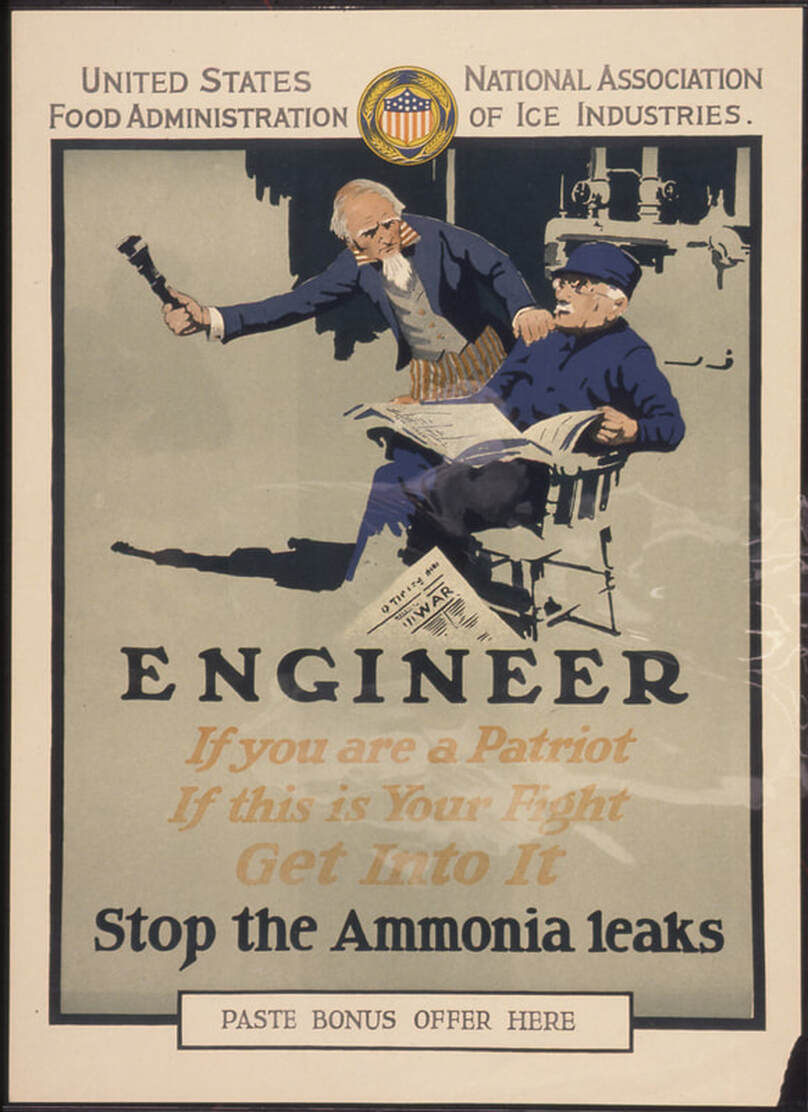
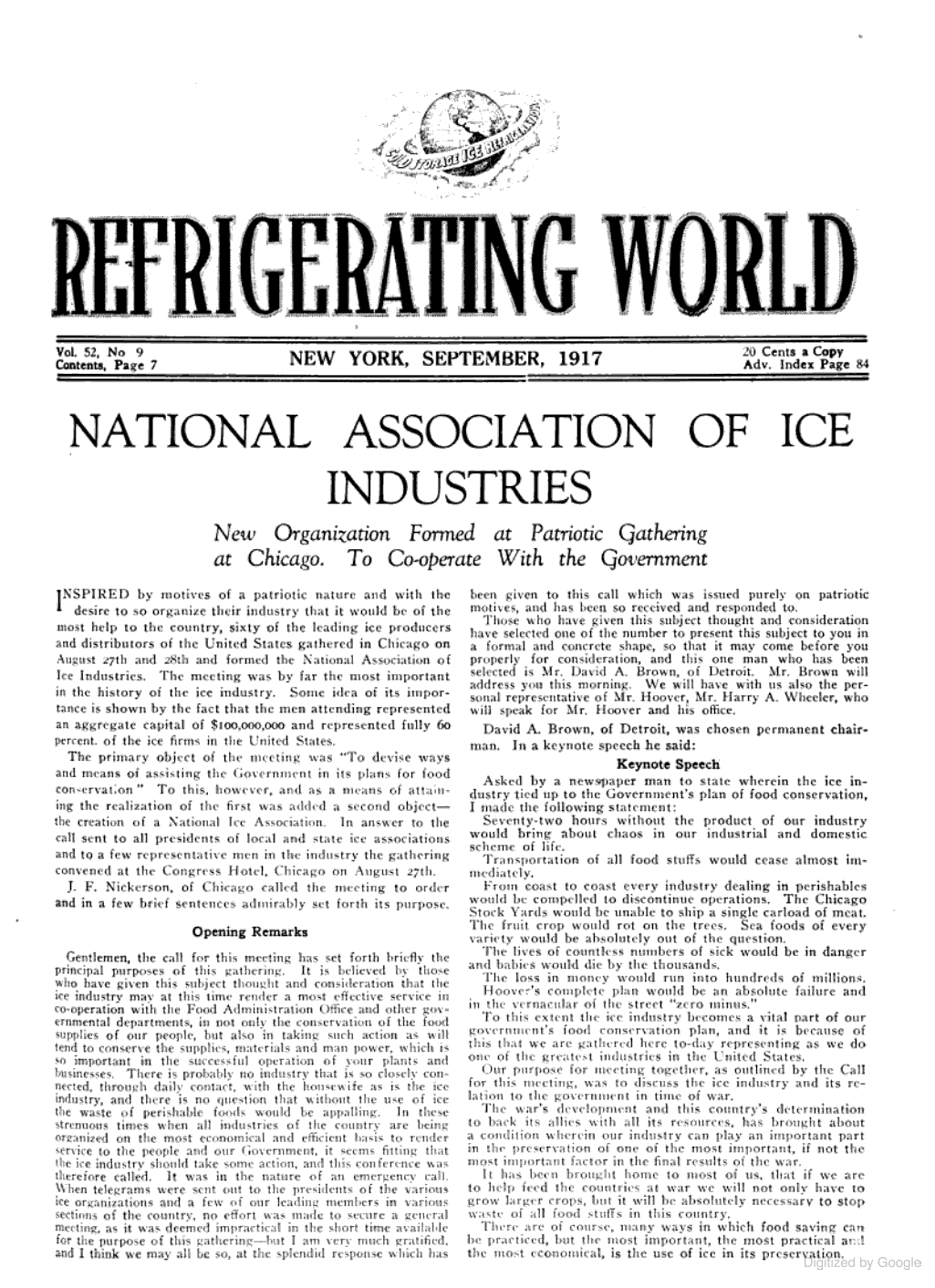

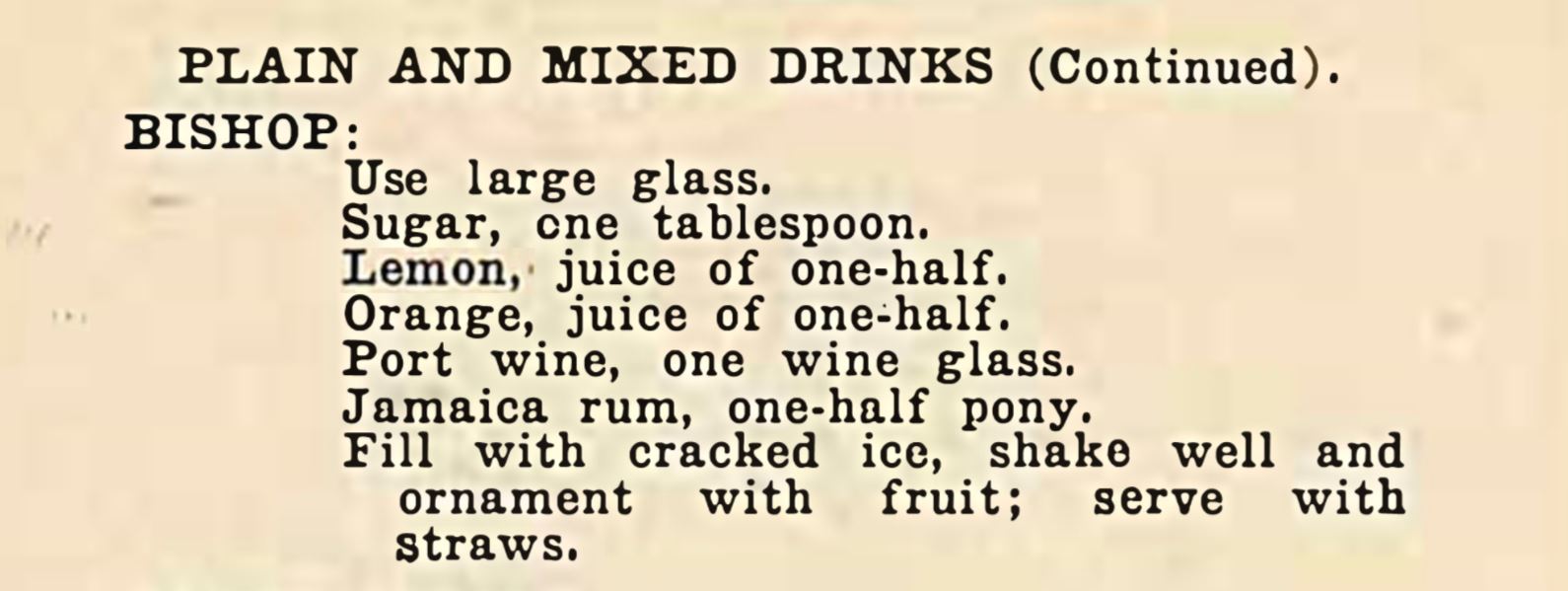
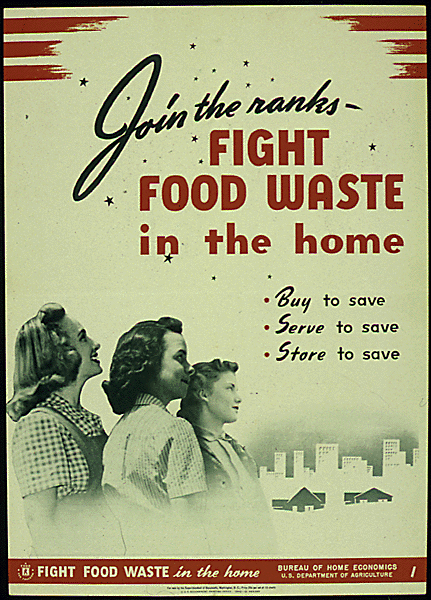
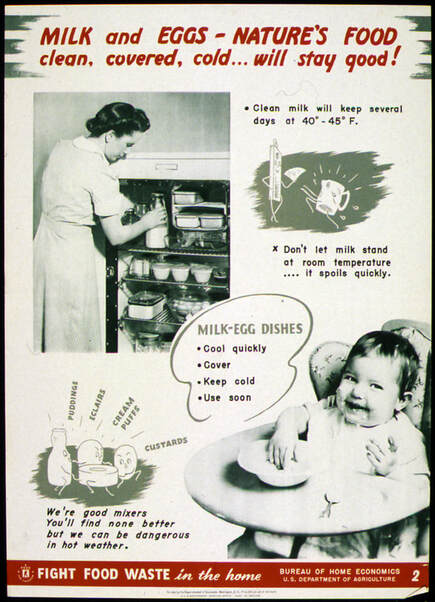
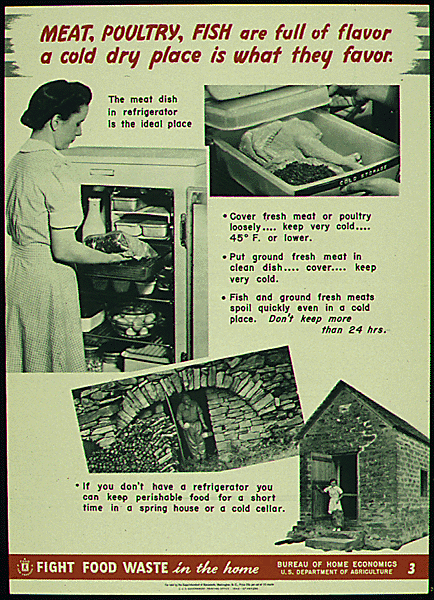
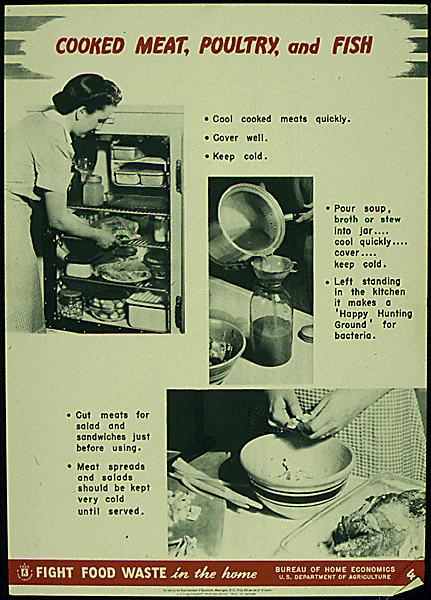
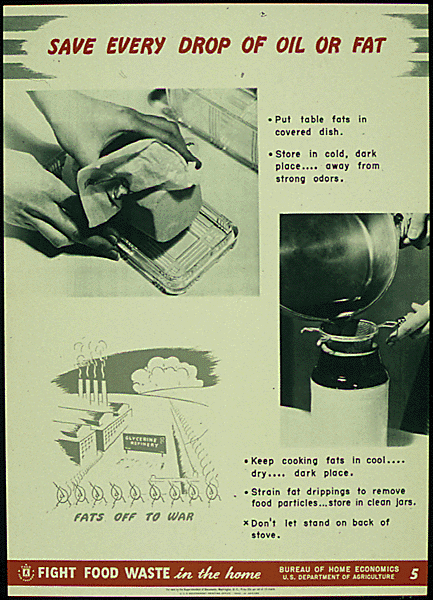
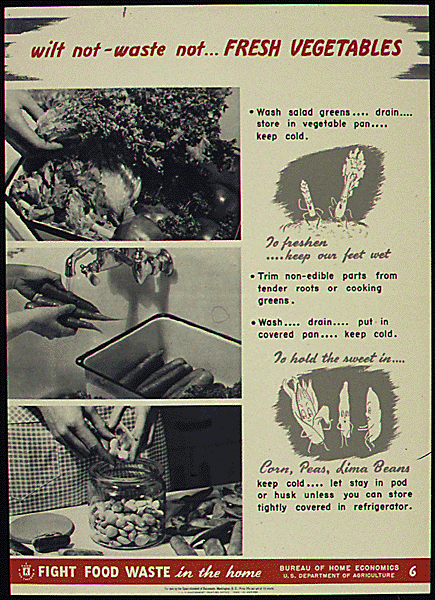
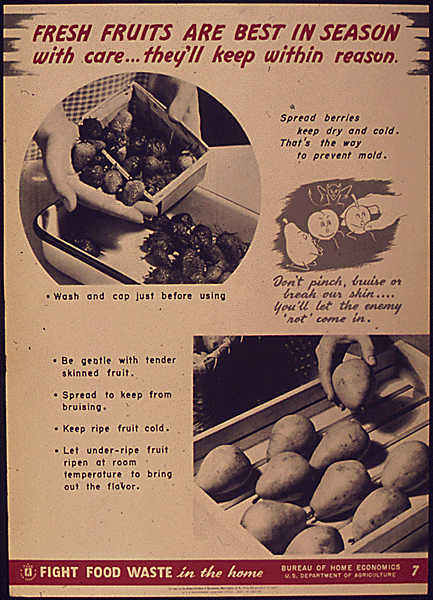
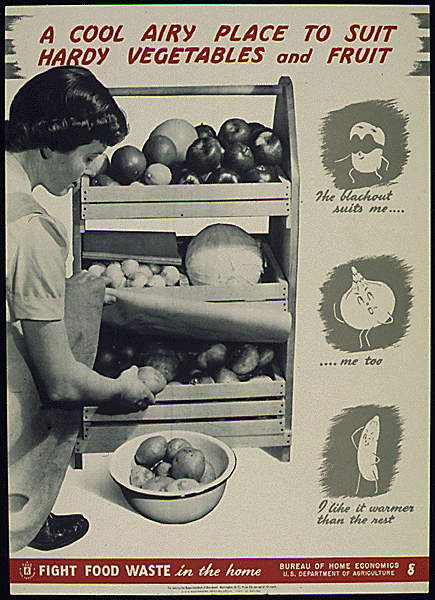
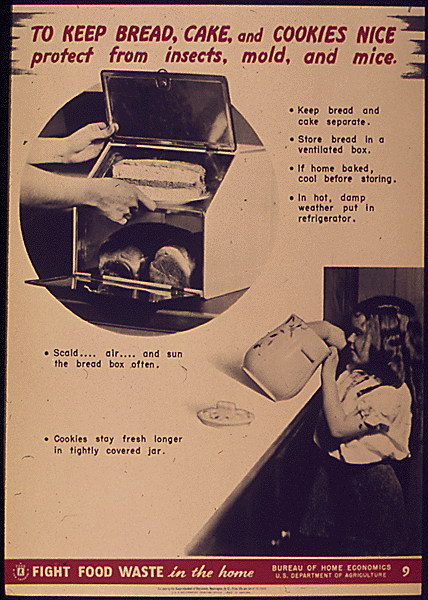
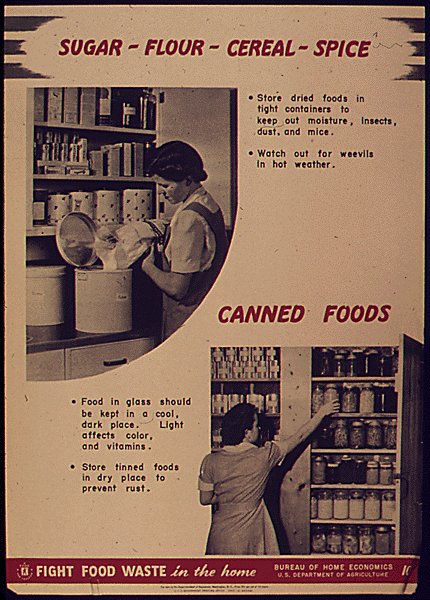
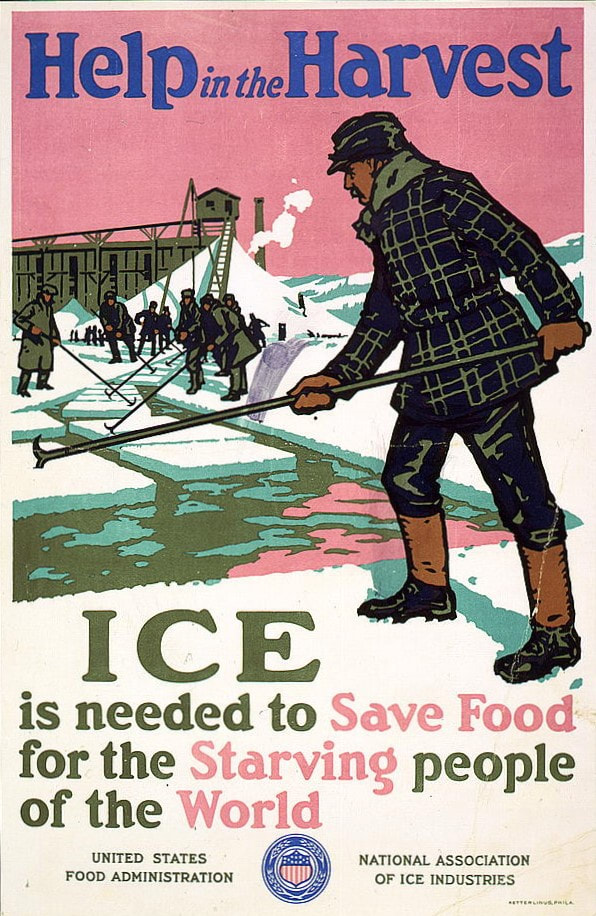

 RSS Feed
RSS Feed